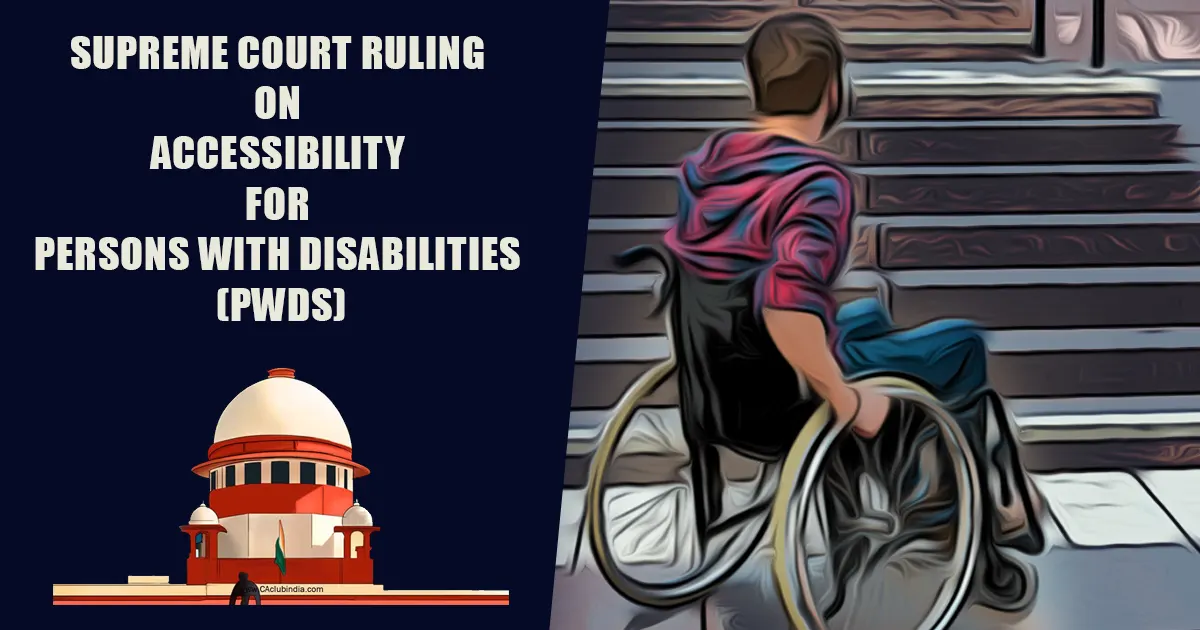
Context
The Supreme Court of India has directed the Union Government to establish mandatory rules to ensure accessibility for persons with disabilities (PwDs) under the Rights of Persons with Disabilities (RPwD) Act, 2016.
Issues Faced by PwDs
- Accessibility Disparities:
- Significant variations in accessible transport infrastructure across states.
- Example: Delhi has 3,775 low-floor buses, while Tamil Nadu has only 1,917 out of 21,669 buses accessible to PwDs.
- Intersectional Challenges:
- Accessibility issues are aggravated by factors like caste, gender, and regional inequalities, particularly in rural areas.
Problems in Current Accessibility Standards
- Self-Regulation vs. Mandatory Rules:
- RPwD Act mechanisms exist for mandatory compliance, but 2017 rules provided only self-regulatory guidelines, leading to inconsistent enforcement.
- Inconsistent Standards:
- Guidelines differ across sectors (transport, education, public infrastructure), preventing uniform compliance.
- Non-Compliance:
- Absence of enforceable standards results in significant gaps, limiting participation in public life for PwDs.
- Implementation Gaps:
- Existing guidelines are illustrative rather than prescriptive, lacking rigor for effective enforcement.
- Lack of Universal Standards:
- Accessibility requirements vary widely, making it challenging to ensure consistency across regions and sectors.
Supreme Court Judgment and Directives
- Mandatory Rules:
- The Union Government must frame mandatory accessibility rules within three months.
- Stakeholder Consultation:
- Directives to consult institutions like NALSAR’s Centre for Disability Studies and other stakeholders.
- Penal Provisions:
- Non-compliance will attract penalties, including withholding completion certificates and imposing fines.
Benefits of Mandatory Accessibility Rules
- Equal Participation:
- Promotes inclusion in education, employment, public transport, and other aspects of life.
- Enhanced Rights and Dignity:
- Creates a more inclusive society free from discrimination or exclusion.
- Uniformity in Enforcement:
- Clear, enforceable rules ensure consistent implementation across all sectors and regions.
Challenges in Enforcing Mandatory Accessibility Rules
- Burden on Implementation Bodies:
- Rural and underdeveloped areas may face challenges due to resource limitations.
- Financial Constraints:
- Upgrading infrastructure and public transportation will require significant investment, which may strain state budgets.
- Resistance from Stakeholders:
- Sectors lacking awareness or resources might resist changes.
Way Forward
- Comprehensive Framework:
- Develop a uniform set of accessibility standards applicable across sectors and regions.
- Involvement of Stakeholders:
- Engage PwDs, advocacy organizations, and relevant stakeholders to ensure practical solutions.
- Monitoring and Auditing:
- Establish a robust monitoring mechanism with periodic audits and penalties for non-compliance.
- Awareness and Capacity Building:
- Conduct training programs and awareness campaigns for public officials, private sector stakeholders, and the general public.
- Financial Support:
- Provide central funding and subsidies to state governments for implementing accessibility standards.
[box]Examine the Supreme Court’s ruling on mandatory accessibility rules for persons with disabilities (PwDs) under the RPwD Act, 2016. Discuss the challenges in enforcing these rules and suggest measures for effective implementation to ensure equal participation and inclusion of PwDs in public life.
[button color=”purple ” size=”medium” link=”https://forms.gle/Wzz7M6oVE4bQS8Ws8″ icon=”” target=”true”]Upload Answer[/button]
[/box]




